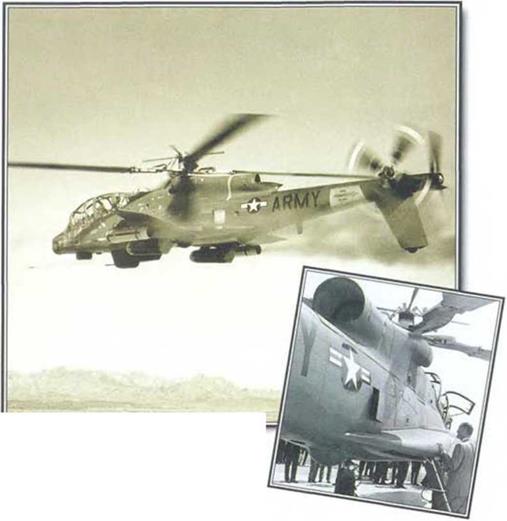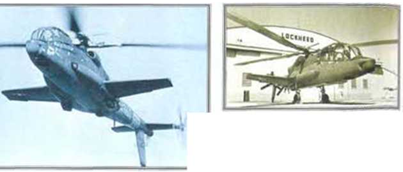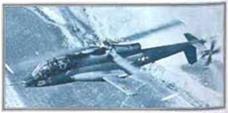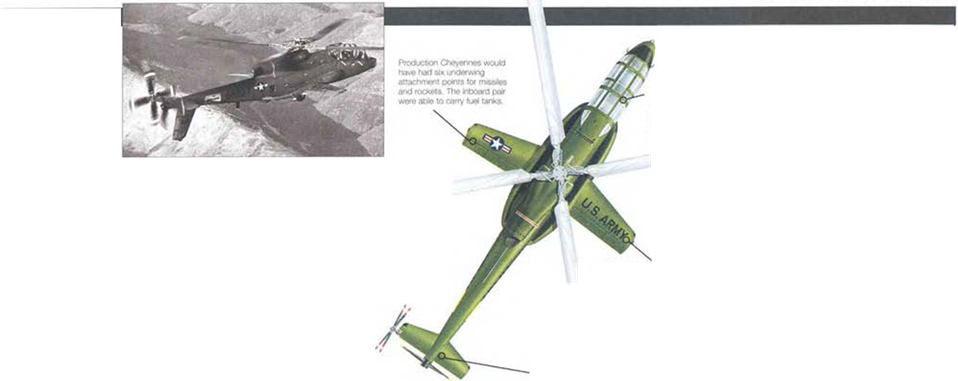AH-56 Cheyenne
• High-speed gunship • Two-seat aircraft • Cancelled after 375 ordered


Helicopters proved their worth
once-and-for-all during the Vietnam War as troop carriers without equal. However, a pressing need for a specialised escort helicopter was soon apparent. Armed UH-1 ‘Hueys’ wore used in the meantime and Bell’s AH-1 provided another interim solution, but the answor lay in the Cheyenne. However, this high-speed, heavily-armed weapons system was plagued by problems.
 |
Lockheed AH-56 Cheyenne

 A Ahead of its time
A Ahead of its time
The cancellation of the Cheyenne forced the US Army to soldier on with tho ‘interim’ Boll АН-1 HueyCobra for many yoars.
The purpose-built AH-64 Apache was finally ordered in 1982.

A Pusher rotor and wings
For high-speed flight small wings produced most of tho lift, while much of the engine power went to the pusher propeller and provided forward thrust.
Gunship layout ►
Lockheed sot the now-established formula tor gunship helicopters. The gunner sat forward, taking responsibility for the weapons systems.
![]()
Since the Cheyenne project, Lockheed has not put a military or civil helicopter into production.
In common with other US Army helicopters, the Cheyenne was after a native American tribe.
► Power of the T64 engine was increased
to 2927 kW (3,922 hp.) during testing.
► The highly manoeuvrable AH-56 was found to bo a stable weapons platform.
>• Cancellation, in May 1969, came just six months before production began.
► The other short-listed AAFSS prototype was tho Sikorsky S-66.
|

![]()


![]()
![]()



![]()

![]()
![]()
![]()
![]()


![]()

![]()

![]()














